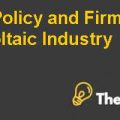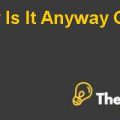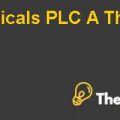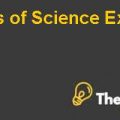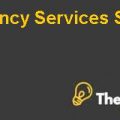
Organization Structure
Procter and Gamble (P&G) formed its first international sales division in 1948 after experiencing rapid expansion in Europe. The U.S. and Europe operations were managed separately along with different organizational structures. These organizational structures were developed and modified over the years.
Product grouping to matrix
P&G introduced divisional structure for its US operations in late 1950 s. The division was based on product categories while sharing the functional activities. The brand managers had to compete in market with their counter-parts in the same division. Some of the products required specialized functional activities, which created problems and eventually,the Matrix system was adopted in 1987.
Geographic grouping to category management
The situation for European operations was different as compared to the US, as it adopted geographic grouping structure. The operations and products were localized in each country. This system also faced a few setbacks. It sometimes created lag of over ten (10) years for some products to reach all the European countries. For example, it took Pampers almost Seventeen (17) years to be available in France. The costs increased due to localized product in each country with substandard manufacturing processes. It also created problems in supply chain. These problems forced P&G to adopt a category management structure.
Global cube
P&G started to explore global markets including Japan and developing countries in late 1980s. The problems in European operations had forced P&G to look for new system to be applied in global perspective. Brussels was still not able to control functional activities at country level in Europe. P&G combined category management and matrix system to form a global matrix system to overcome these problems.
Question 2
Distinguishing features of Organization 2005
P&G again started facing issues in mid-1990s with the Global cube. This led P&G to go for a global restructuring program, which was named as Organization 2005.Some main features of the program are as under:
- A new system with mixture of interdependent organization eliminating the old matrix system
- Focus on cost saving by laying-off 15,000 employees estimated to achieve a cost saving of $900m after tax annually
- Formal and standardized processes globally (making P&G more centralized)
- Leaner organization with less employees and fewer management layers
- Some of the tasks/decisions were assigned to individuals, previously being decided upon by the committee to reduce the time taken.
- Three major separate organizations
- Global Business Unit focused on products
- Market Development Organization focused on Markets
- Global Business services focused on internal business processes
Global Business Units (GBUs)
Seven GBUs were established in total, each led by a president reporting directly to the CEO. These units would operate autonomously on business strategy, business development, brand design and product development.Each of the GBU is responsible for its profits. This structure is expected to make decision making process faster and cut cost.
Marketing Development Organization (MDOs)
MDOs were assigned to modify the global programs to fit in the local markets by using regional knowledge and develop market strategies accordingly.
Global Business Services (GBS)
GBSs were assigned to standardize and streamline the business processes. They were also responsible to consolidate IT platforms and strengthen business processes for the economies of scale. The major task for GBS was to replace individual systems with a SAP software system across the company.
Reasons for adoption
The reason for adopting this new system was to overcome the issues in the global matrix cube system. The major issue with the system was the increasing control of functional management as it was responsible for promotions and career development of employees. With time, the functions started increasing their own authority and started conflict.Gradually, the competitors started to take-over the markets and this resulted in P&G to go for a major re-structuring with Organization 2005.
Question 3
Keep or dismantle Organization 2005
JagerL aftey took a very risky and required step to restructure the organization. The Organization 2005 in theory seems to be a very good system with pre-defined line of reporting however,it was not able to perform as expected. There were many arguments for and against the organization 2005 system. Some of the employees were of the view that there was only an implementation problem while others blamed the new system to be responsible for the disaster. External observers were of different view, as they argued on diversified nature of the P&G business and suggested that P&G should focus on particular businesses only. Before coming to a decision on whether to keep Organization 2005 system or not, the problem needs to be understood in more detail.......................
This is just a sample partial case solution. Please place the order on the website to order your own originally done case solution.

